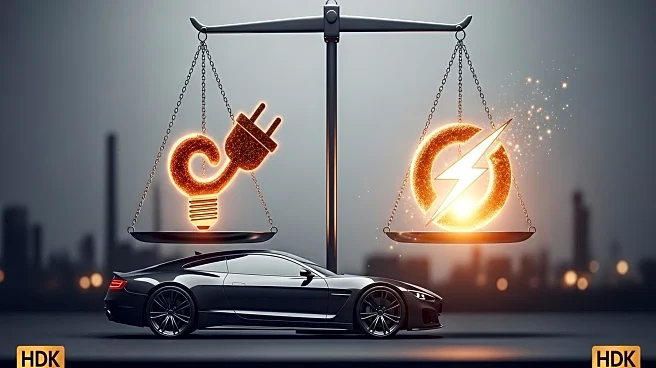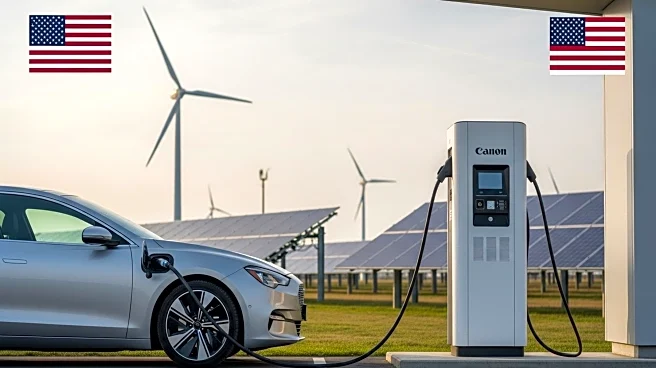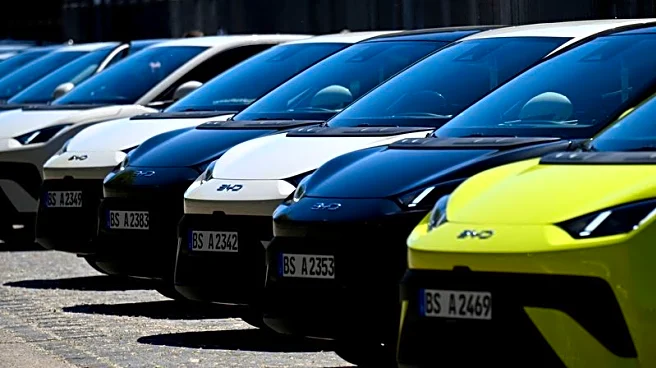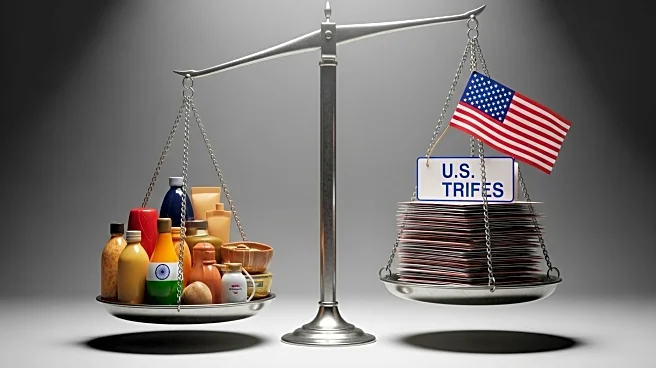What's Happening?
The U.S.-EU trade deal finalized in August 2025 has significantly altered economic dynamics between the two regions, particularly affecting the European auto industry and U.S. energy sectors. The agreement reduces U.S. tariffs on EU automotive imports from 27.5% to 15% and eliminates EU tariffs on U.S. industrial goods. This change has led to immediate cost savings and strategic opportunities for European automakers such as BMW, Mercedes-Benz, and Volkswagen, who are adjusting production strategies and supply chains to benefit from reduced trade barriers. BMW has utilized its U.S. Spartanburg plant to produce 400,000 vehicles annually, benefiting from an EU tariff exemption for cars built in the U.S. by European companies. Volkswagen, facing a profit decline due to tariffs, plans to open a new factory in South Carolina and explore additional facilities in the U.S.
Why It's Important?
The tariff reductions offer substantial cost savings, with U.S. importers saving $1,500–$2,000 per vehicle and European automakers collectively saving up to €500 million monthly. These savings are expected to stabilize supply chains as U.S. steel and semiconductor tariffs on EU goods are lifted, reducing input costs for European manufacturers. For the U.S. energy sector, the deal represents a transformative opportunity, with the EU committing to procure $750 billion in U.S. energy exports by 2028. This aligns with the EU’s energy security and decarbonization goals, creating a long-term demand tailwind for U.S. energy producers. Additionally, the EU’s $600 billion investment in U.S. strategic sectors amplifies opportunities for U.S. energy firms, particularly in clean energy technologies and critical mineral supply chains.
What's Next?
The August 2025 implementation date creates a critical window for firms to optimize their positioning. European automakers must accelerate U.S. production shifts to capitalize on tariff reductions before potential renegotiations or regulatory changes. U.S. energy firms have until 2028 to secure infrastructure projects to meet EU procurement targets. Delays could erode competitive advantages, especially as geopolitical tensions and regulatory hurdles persist. Risks include the EU’s resistance to U.S. agricultural exports and unresolved regulatory gaps in digital services, which could delay broader trade liberalization.
Beyond the Headlines
The conditional nature of the agreement, requiring EU legislation to fully remove tariffs on U.S. industrial goods, introduces uncertainty. For automakers, the long-term viability of U.S. production hubs depends on labor costs, regulatory alignment, and supply chain reconfiguration pace. Investors should monitor near-term execution risks while capitalizing on the clear tailwinds for transatlantic trade.













